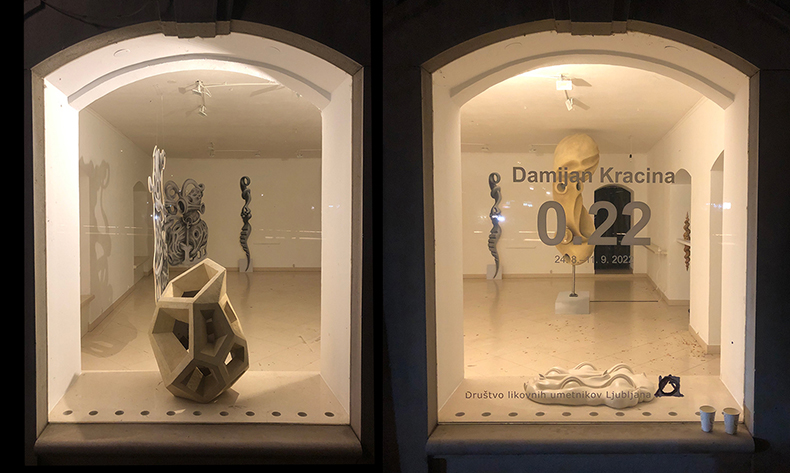
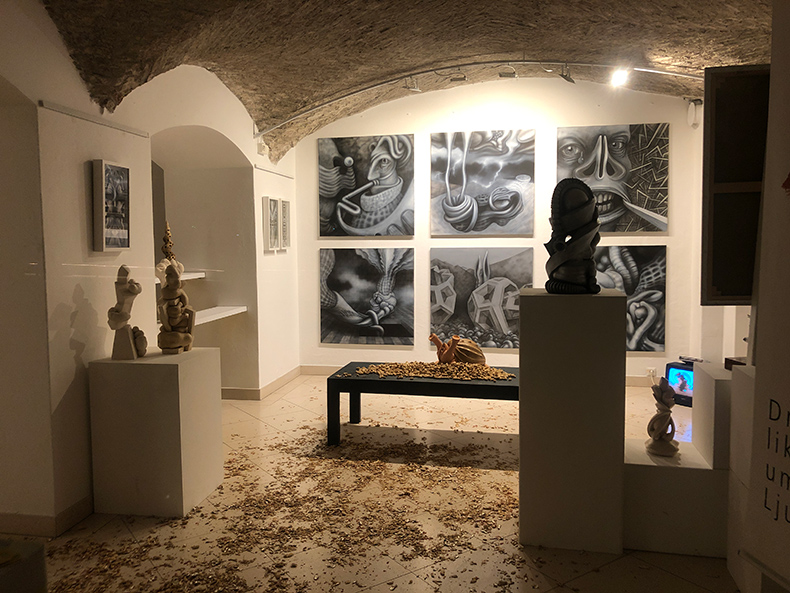
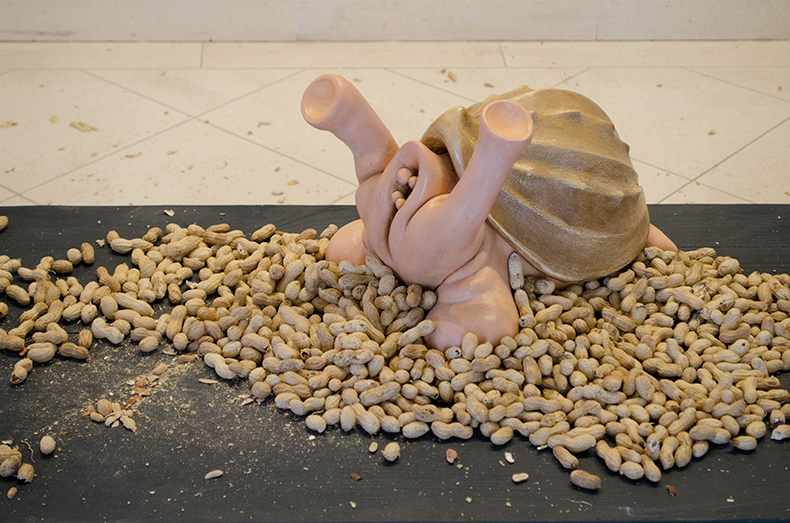
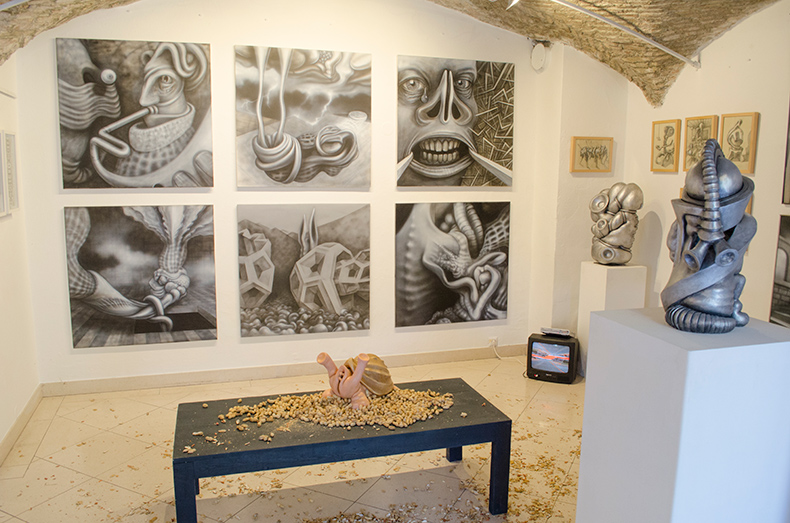
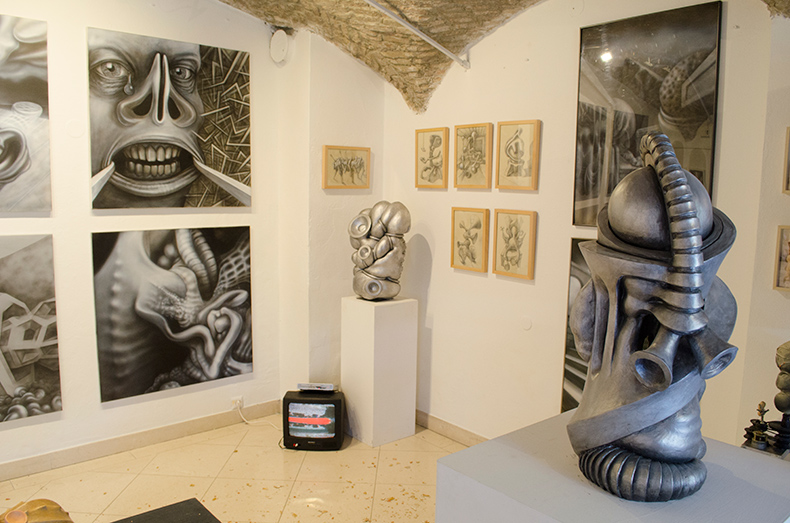
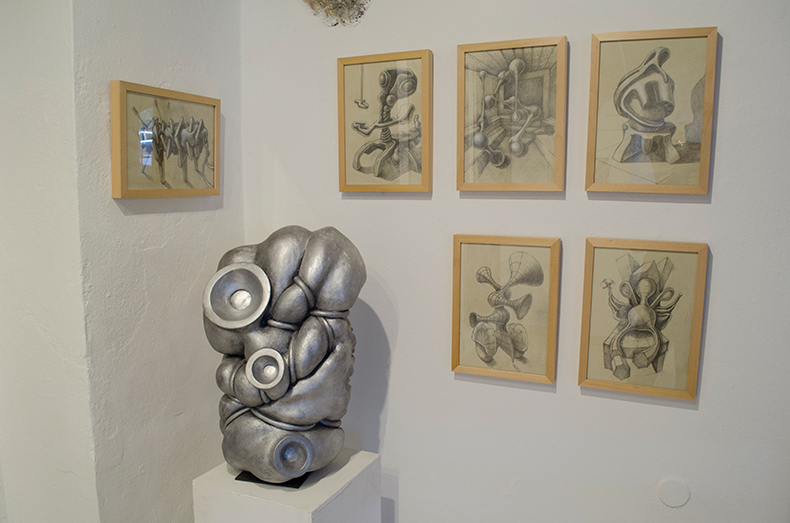
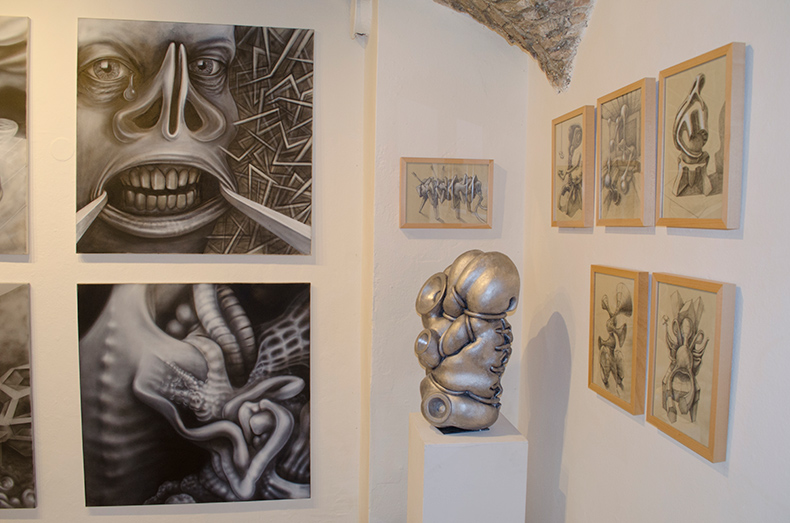
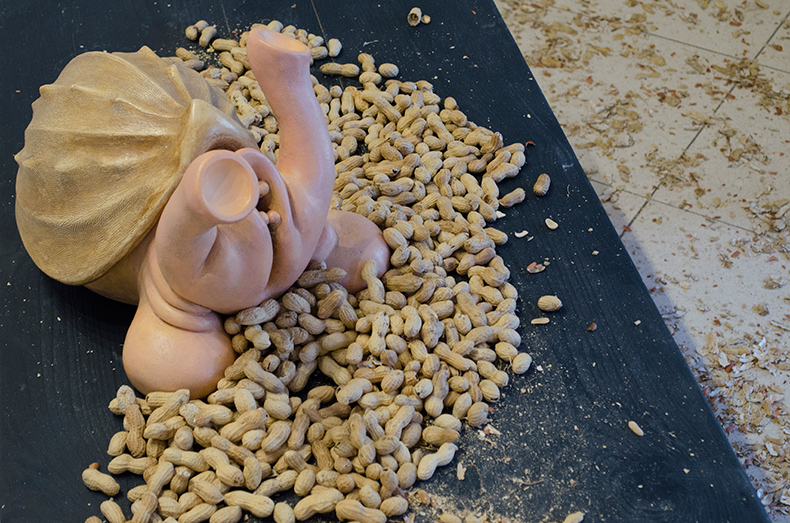
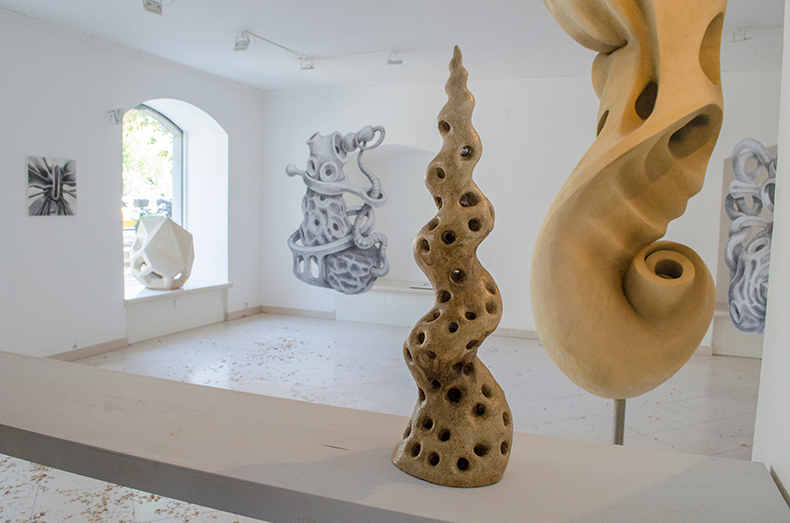
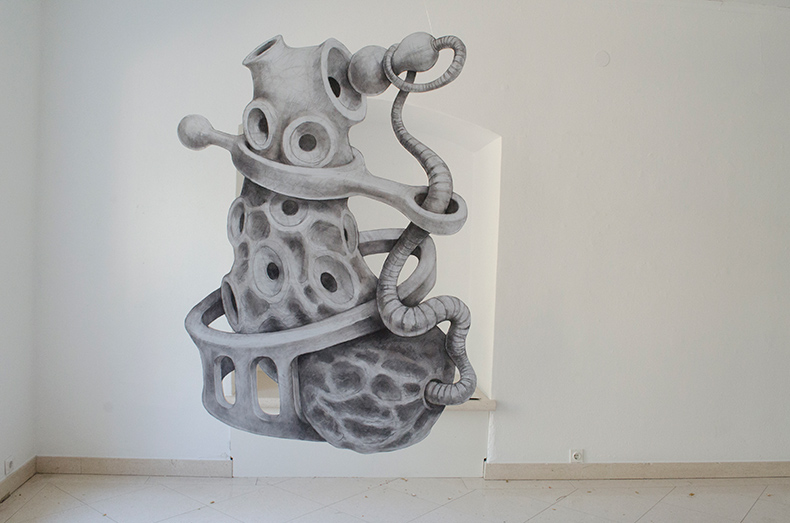
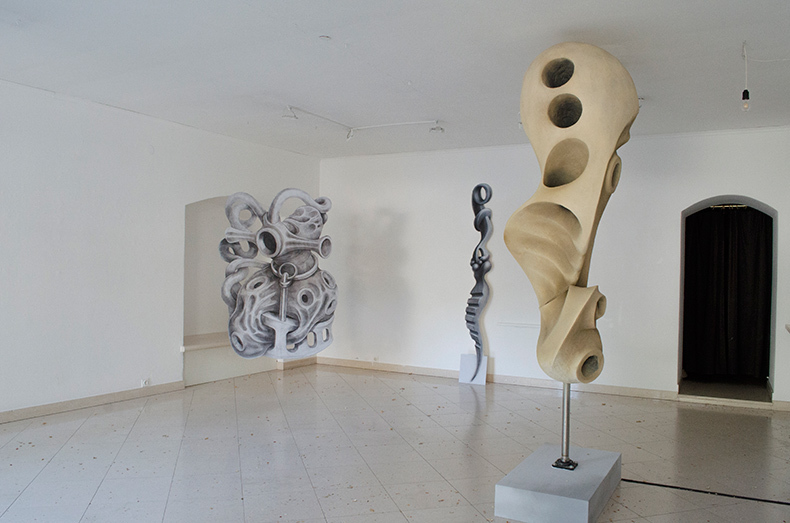
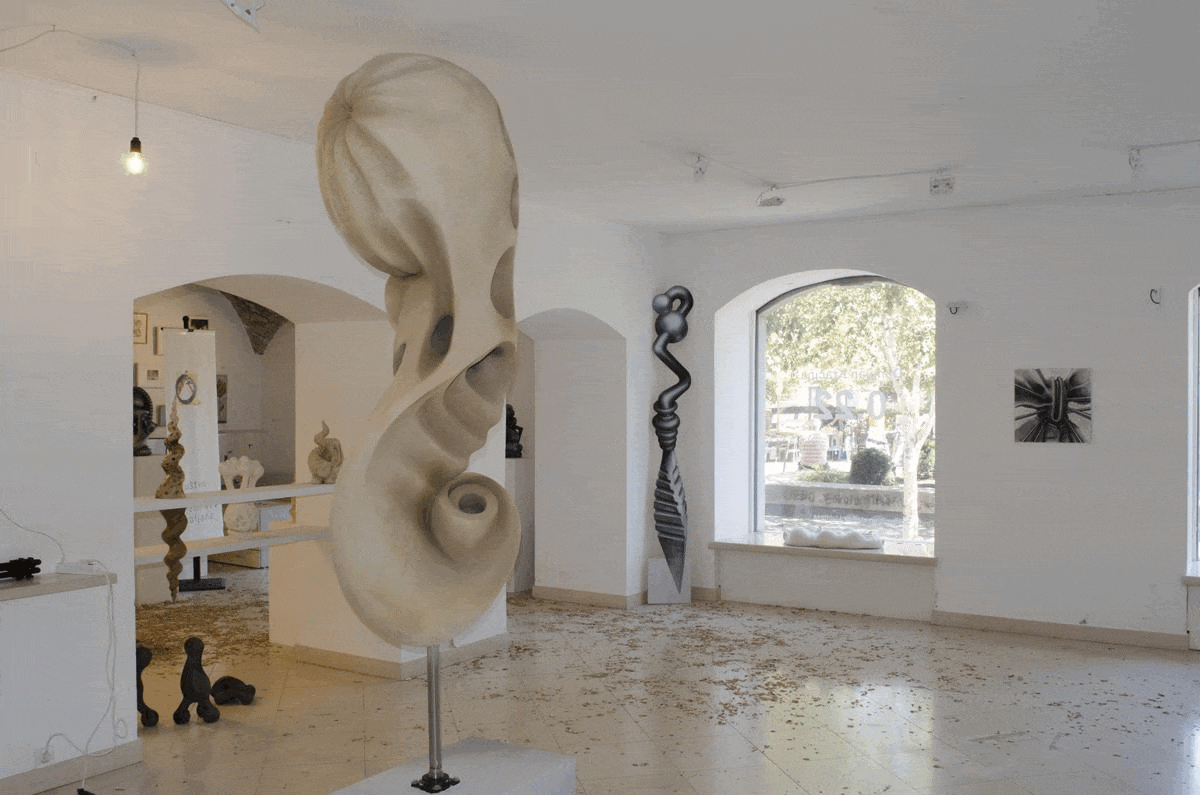
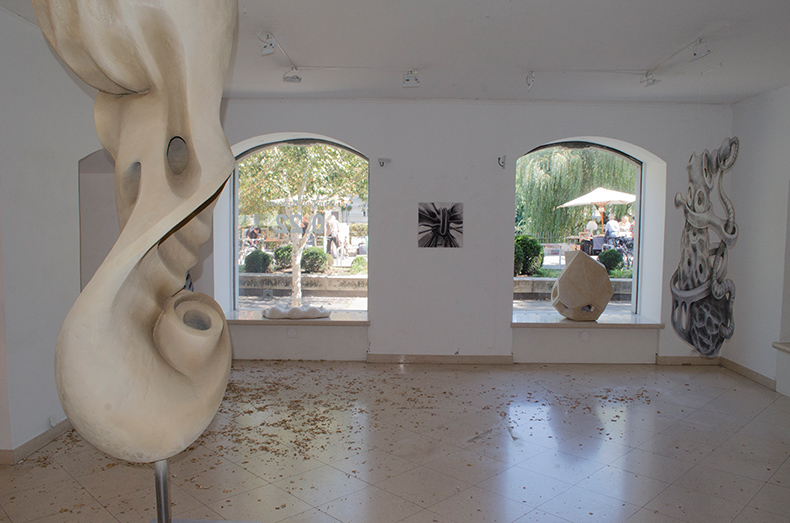
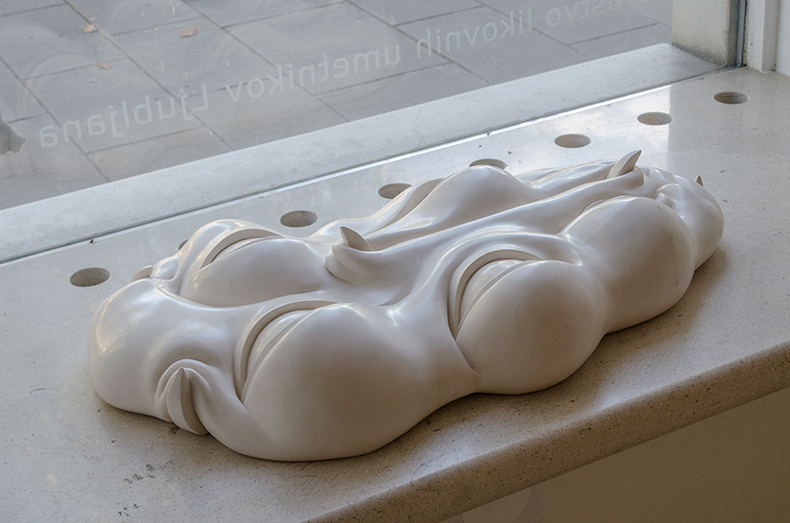
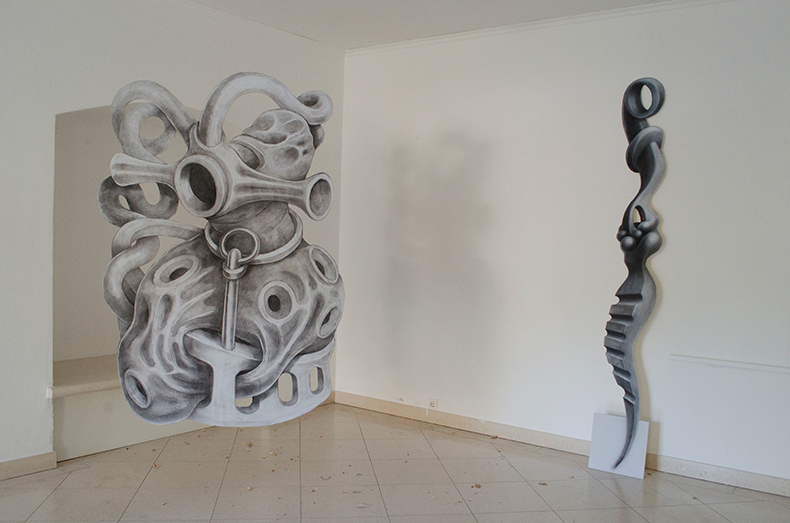
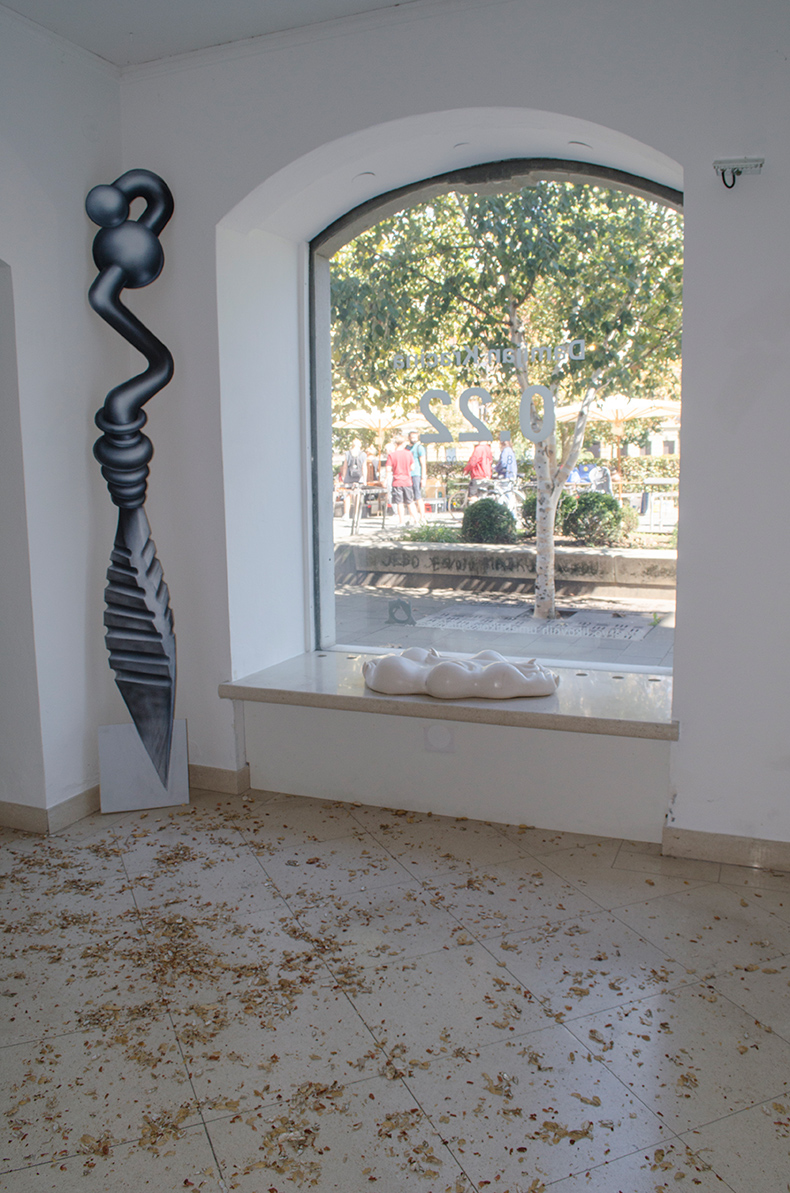
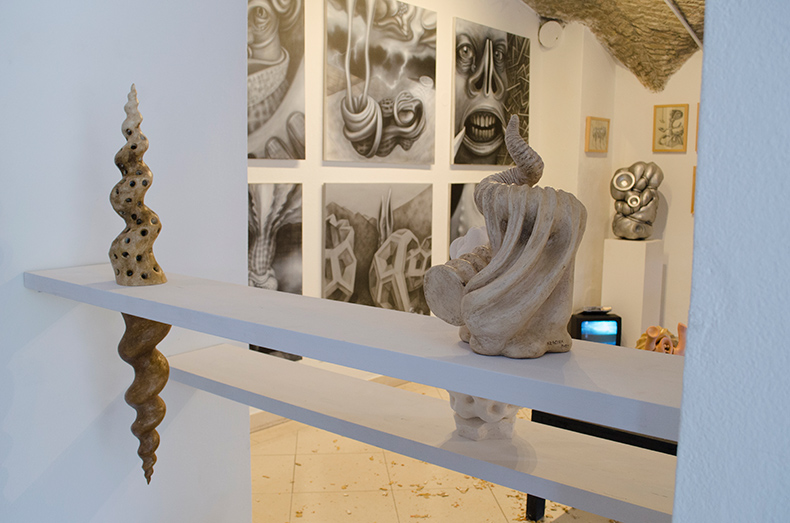
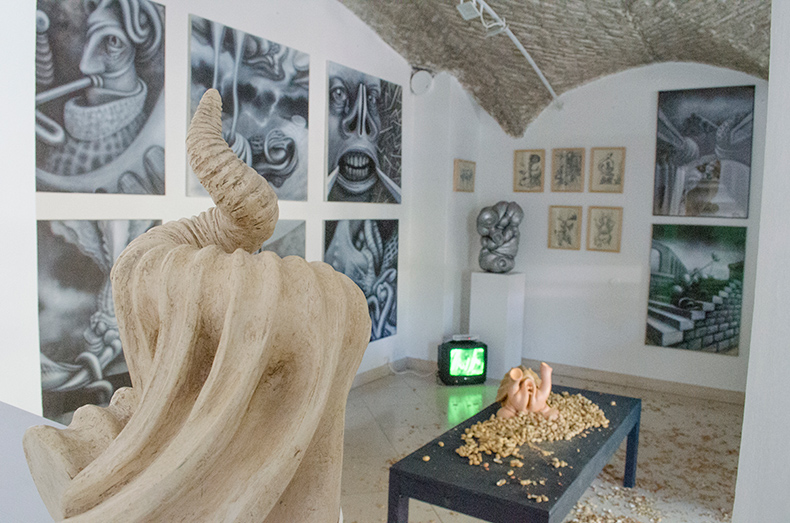
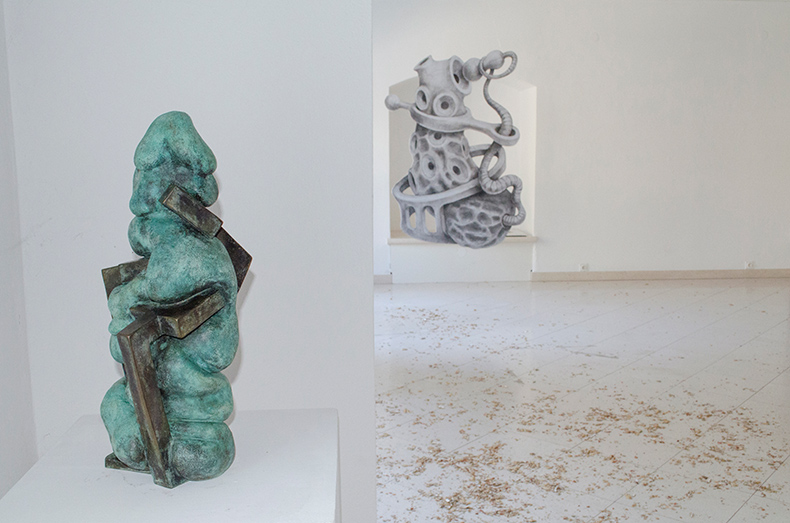
Instalation view 2022
Damijan Kracina
0,22, Damijan Kracina, Galerija DLUL, Breg 22, Ljubljana, 24.8-11.9
0,22 / Naslov, povzet po računalniškem programu in balistični terminologiji, nakazuje različico razstave manjšega obsega, ki je predstavitev in pregled najnovejših del Damijana Kracine, nastalih do leta 2022.
Kipar in multimedijski umetnik, ki je v zadnjih letih uspešno sodeloval na javnih kiparskih natečajih, je realiziral skulpturi, ki sta odlično dopolnili poprej prazne fasadne niše Narodne galerije v Ljubljani. Izdelal je doprsni kip svojega rojaka, severnoprimorskega pesnika Ivana Volariča - Fea, ki čaka na postavitev v bronu na trgu v Kobaridu. Na Kitajskem, v z Ljubljano pobratenem mestu Chengdu, je letos po njegovih načrtih nastala velika skulptura z naslovom Zborovanje v parku, v okrožju Shuangliu.
Kljub številnim vzporednim razstavam in ustvarjalnim dejavnostim, v katere je vključen, obstaja množica umetniških del iz njegovega ateljeja v Šviceriji v Ljubljani, ki zaradi umetnikove kompulzivne produkcije še niso dobila priložnosti za predstavitev. Povabila na razstave Damijana Kracino pogosto spodbudijo, da glede na prostor in produkcijske možnosti instalacijo zaokroži v celostno umetniško delo, kjer proces ustvarjanja poveže več umetnin v smiselno in učinkovito prostorsko izkušnjo. Tokrat je vodilni motiv arašid, lat. Arachis hypogaea, ki je posebna vrsta podzemne stročnice. Ko se pojavi na mizi s pivom, morda vzbudi val radovednosti, vendar se le redki potrudimo, da bi prišli do dna njegovi posebnosti. Izjemen in nenavadno oblikovan arašid je tokrat navdih za kiparske variacije.
Postavitev razstave v Galeriji DLUL je kontrast med utesnjenostjo Muzeja čudes, vzdušjem umetnikovega ateljeja in na drugi strani prefinjenostjo galerijske izkušnje bele kocke, ki jo ponuja galerija z arhitekturo pritličja meščanske palače, z vsemi statičnimi arhitekturnimi elementi, nišami, loki in stebri. Damijan Kracina sprejme prostorske izzive in se jim uspešno prilagodi.
V vhodnem prostoru se nahaja zgoščena zbirka malih skulptur, idejnih skic, slikarskih poskusov, referenčnih artefaktov, dokumentarnih fotografij nedavnih dosežkov in zgodovinskega video gradiva o projektih in vplivih, ki se kot nekakšen kokon idej odpira skozi niše in se razvije v galerijsko instalacijo z vrtljivo biomorfno skulpturo, ki jo kontekstualno podpirajo velike risbe z ogljem z organsko obrezanimi konturami. Dialog med prostori in deli pojasnjuje tudi umetnikovo logiko kiparjenja od dvo- k tridimenzionalnemu, od množice začetnih možnosti k prefinjenemu izboru.
Damijan Kracina v svojem ustvarjanju ostaja zvest čudesom narave, ki navdihujejo njegov ustvarjalni um in vodijo njegovo roko zdaj že dvajset let, odkar je doživel rezidenco v Novi Mehiki. Ustvarja »Heavy metal bio grisaille« bitja, ki imajo tendenco, da se, ko razvijejo svojo najbolj učinkovito prilagodljivo obliko, maščujejo človeštvu, ki jih je pripeljalo do te točke.
Jani Pirnat
0,22 / The title, taken from computer program and ballistic terminology, suggests a variant of a small-scale survey exhibition, which is a presentation and overview of Damijan Kracina's recent work created until year 2022.
A sculptor and multimedia artist who has successfully collaborate in public sculpture competitions in recent years, has realised two sculptures that have perfectly completed the previously empty facade niches of the National Gallery in Ljubljana. He has created a bust of his compatriot poet Ivan Volarič Feo, which is waiting to be placed in bronze on the square of his hometown in Kobarid. In China, Ljubljana's sister city Chengdu, artist's large sculpture group entitled The Gathering was erected in a park in Shuangliu District.
Despite several parallel exhibitions and creative activities in which he is involved, there is a plethora of artworks from his studio in Švicerija in Ljubljana that have not been given the opportunity to be presented, due to artist's compulsive production. Invitations to exhibitions often encourage Damijan Kracina, depending on the space and production possibilities, to round off the installation into a more holistic work of art, where the process of creation connects several artworks into a meaningful and effective spatial experience. This time, the leading motif is the peanut, lat. Arachis hypogaea, which is a special type of underground legume. When it appears on the table with a beer, it may arouse a surge of curiosity, but it is rare that we bother to get to the bottom of its peculiarity. Extraordinary and unusually shaped, the peanut is this time the inspiration for sculptural variations.
The setting of this exhibition is a contrast between the cramped atmosphere of the Museum of Wonders, the atmosphere of the artist's studio in the entrance space, and on the other hand the refinement of the possible white cube gallery experience that the DLUL Gallery, with the architecture of the ground floor of a bourgeois palace, with all the static architectural elements, niches, arches and columns, can offer. Damijan Kracina accepts the spatial challenges and adapts successfully.
The entrance space houses a condensed collection of small sculptures, sketches of ideas, painting experiments, reference artefacts, documentary photographs of recent achievements and historical video material on projects and influences, which, like a kind of cocoon of ideas, opens up through the niches and evolves into a gallery installation with a rotating biomorphic sculpture, contextually supported by large charcoal drawings with organically cropped contours. The dialogue between spaces and works also explains the artist's logic of sculpture making from the two-dimensional to the three-dimensional, from a multiplicity of initial possibilities to a refined selection.
In his oeuvre, Damijan Kracina has remained faithful to the wonders of nature that inspire his creative mind and guide his hand now already for the twenty years since his experience of residency in New Mexico, »Heavy metal bio grisaille« creatures that have a tendency, once they have developed their most efficient adaptive form, to take revenge on the humanity that has brought them to this point.
Jani Pirnat